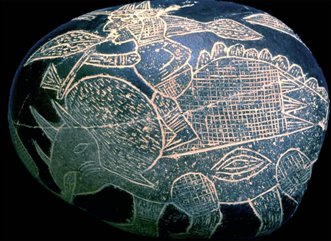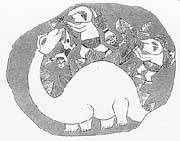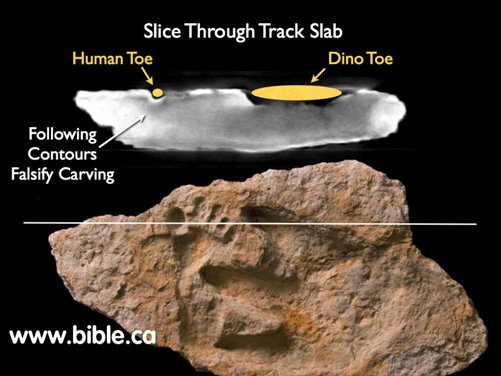A Logical Argument for God's Existence
1. Something exists.
That seems pretty simple, right? Can we all agree that this is true? Even the atheist will agree that this is true. This seems to be undeniably true. Anybody who would say that “nothing exists” would have to exist in order to say that in which case he would be defeating his own statement.
2. Nothing does not produce something.
This statement is of course true as well. Think about it. It would be absurd to say that nothing could create or produce something.
Nothing is no-thing. Nothing does not have the power to do anything at all, does it! Even David Hume one of the most zealous skeptics of Christianity ever agreed to the truth of this second premise. He said, “I never asserted so absurd a proposition as that anything might arise without a cause.” (Feb. 1754).
To propose that nothing could do anything at all sounds utterly foolish. A basic law of physics (and if you ever had a physics class you’ll recall this) is called the Law of Conservation. It states: “From nothing, comes nothing.”
This supports our second premise as well. So if the first two premises are true, that 1. Something exists and 2. Nothing does not produce something, then a rather astounding conclusion logically follows...
3. Something must have always existed.
Why’s that? Okay, well, let’s walk back through this. Something now exists. Nothing does not produce something, then something must have always existed.
Why must something have always existed? To have brought the “something” that now exists (in No.1) into existence. Why? Because premise number two is true (Nothing does not produce something). But the critic asks, “Why does that something have to be eternal? Aren’t you just assuming the eternality of that something that brought into existence the something that now exists (no.1)?"
Not at all. Stay with me on this. There is a reason why that something (no. 3) must be eternal. To say that that something (in premise no. 3) did not always exist would be to say that it was finite. Right?
If that something (in premise no. 3) was finite, that means it had a beginning. If that something had a beginning we are back at our start. How did that something (premise no. 3) begin? Did nothing create something? No, that’s impossible. Nothing can’t do anything.
Anything that begins to exist must have a cause. If we deny this we are saying that nothing produced something from nothing and by nothing. But this is absurd. So we are left with the only other option and that is that something in no. 3 must have always existed.
Do you understand why premise 3 must be true?
Now, there are only two options as to what that “something (No.3) [that] always existed” might be:
A. The universe, or
B. Something outside the universe
The fourth premise in my argument is this:
4. The universe has not always existed.
In 1948, a theory known as The Steady State Theory, was set forth, that proposed that the universe was eternal (William Lane Craig, Reasonable Faith, p. 102). It stated that the universe has always been. “If this theory is correct” the critics of Christianity said, “there is no need for a Creator.” Well, the theory sounded good on paper for the atheist, for a while but the scientific evidence against it has since demolished the theory.
Numerous evidences from the field of astronomy now overwhelmingly point to the fact that the universe actually began to exist a finite time ago in an event when all the physical space, time, matter, and energy in the universe came into being.
And that is exactly what the Bible affirms, that the universe had a beginning. “In the beginning God created the heavens and the earth” (Gen. 1:1).
Let me share with you just 2 facts of science that deal a fatal deathblow to the theory of an eternal universe. The first blow to this theory that universe is eternal is…
A. THE MOTION OF THE GALAXIES
Prior to the 1920’s, scientists had always assumed that the universe as a whole was stationary. [Of course they acknowledged that there was movement of planets in solar systems, etc.]
But in 1929 an alarming thing happened. An astronomer named Edwin Hubble discovered that the light from distant galaxies appeared to be redder than it should. The startling conclusion to which Hubble was led was that the light is redder because the universe is growing apart; it is expanding! When the source of incoming light is moving away from an object the light that you see is shifted toward the red end of the spectrum. The light of the galaxies was redder because they are moving away from us. But here is the interesting part: Hubble not only showed that the universe is expanding, but that it is expanding the same in all directions. Scientists have concluded that the galaxies in the universe are not stationary but are expanding further and further away from each other from what appears to be some stationary point.
Imagine that I were to draw a bunch of dots on a balloon that represented galaxies and then blow up the balloon. If you were to suck the air back out, or let’s say rewind the film, go back in time—what would happen? The dots would converge, i.e. get closer to one another. The same is true with our universe. If you go back in time scientists say that the stars would converge into a singular space, where they exploded into being:
This explosion or beginning of the universe is often referred to as, you know the name:
“THE BIG BANG." We call it Genesis 1:1!! It’s incredible that the scientific evidence that helps establish Big Bang theory also helps verify what the Christian theist has always believed: That the universe actually had a beginning!!
Genesis 1:1 “In the beginning, God created the heavens..."
A second blow to the theory that the universe is eternal comes from the facts behind...
B. THE SECOND LAW OF THERMODYNAMICS
[The first law says that the actual amount of energy in the universe remains constant—it doesn’t change.]
The Second Law of Thermodynamics is one of the best, most established laws in all of science. In fact, there is no recorded experiment in the history of science that contradicts it. It states that: the amount of useable energy in any closed system (which the universe is) is decreasing. In other words, the useable energy in the universe is dying out like the batteries in a flashlight.
Scientists acknowledge that the sun can not burn forever, and that even our galaxy itself will one day, if left to itself, burn up and die out. So we reason that if the Second Law of Thermodynamics is true for all closed systems, and it is, then it is true for the universe as a whole. The universe according to the atheist is a gigantic closed system, since to them it is all there is and there is nothing outside it. This means that the universe is currently running out of useable energy.
If it is running out of useable energy, then it cannot be eternal, for a finite amount of energy (no matter how large the quantity.) could never have brought the universe through an eternity of time.
Flashlight Illustration: Let's say you stumbled upon this flashlight and you’re curious how long it has been burning. So you do a little investigation. Through your investigation you discover that the batteries are going down hill. They are running out of energy. You turn to a scientist standing nearby and ask him: “How long do you think the flashlight’s been burning?” Now, what if he was to tell you: “It’s always been on. It’s been lit like this and burning like this forever.”
Hunh? Would you believe that? Of course not. There’s a problem with that isn’t there?
Batteries with a finite amount of energy (seen in the fact that they are steadily running out of energy) could never have kept the light burning for an eternal amount of time. It would have run out of batteries trillions of years ago!! So it is with the universe. The amount of useable energy is steadily decreasing, thus proving it impossible that it has been burning for all eternity. So, it is scientific discoveries like…
1. The Motion of the Galaxies
2. The Second Law of Thermodynamics (and other discoveries like the background radiation echo discovered by Penzias and Wilson) ...that have blown the Steady State Theory into smithereens.
Now, if my premises are all true:
1. Something exists.
2. Nothing does not produce something.
3. Something must have always existed.
4. The universe has not always existed
...then a conclusion can be validly drawn from these premises.
5. There must be an eternal power beyond the universe that caused the universe to come into existence.
Do you think this is a sound argument thus far? I believe it is! The whole argument could come crashing down, if even just one of the premises could be proven to be false. Causing the argument to crash wouldn’t prove that God doesn’t exist, it would just prove that the argument is not valid. Let’s take it a bit further.
6. Intelligent life exists in the universe.
I take that to be self-evident. This also seems to be undeniable. Anybody who would say that there is not intelligent life in the universe would be uttering an intelligent statement from an intelligent being.
To understand any of this study this far (even if you disagreed with what I was saying) would prove that this sixth premise is true...for it has taken a great degree of intelligence to understand the thousands of combinations of syllables that I have been uttering.
So this premise is undeniably true as well.
Let’s take it further.
7. It takes an intelligent living being to create an intelligent living being.
How could a material, inanimate, unintelligent, unconscious force produce on intelligent living, breathing being? It takes a living, intelligent being to create a living, intelligent being. Non-life does not produce life. You could leave the barren side of a mountain exposed to...
--wind
--rain
--the forces of nature
--chance
--and millions of years of time and you would never get a Mount Rushmore, let alone a living, breathing human being. Why? It takes intelligence. You need intelligent intervention.
It would take great intelligence to create a robot that operates like a human, and even more so, it takes intelligence to create a real human being.
8. Therefore there must be an intelligent, living, eternal power, beyond the universe, that created the universe.
That intelligent, living, eternal power, beyond the universe that created the universe is God.
If the universe has not always existed, and something must have always existed, then something or someone outside of the universe must have always existed, I propose to you that that person is an intelligent, living, powerful being, i.e. God.
CONCLUSION
For me it is more reasonable to believe, based on the laws of logic as well as the observable scientific evidence that God exists, rather than to believe what the atheist believes that nothing, times nobody, equals everything we see in the universe.
Throw in the fact that we also have the testimony of our conscience and the revelation of God in the scriptures and I believe we are standing on solid ground when we affirm:
“In the beginning God created the heavens and the earth.” (Genesis 1:1)
[Charlie H. Campbell adopted major premises from a debate heard on the existence of God by Norman Geisler]
A Logical Argument For God's Existence















